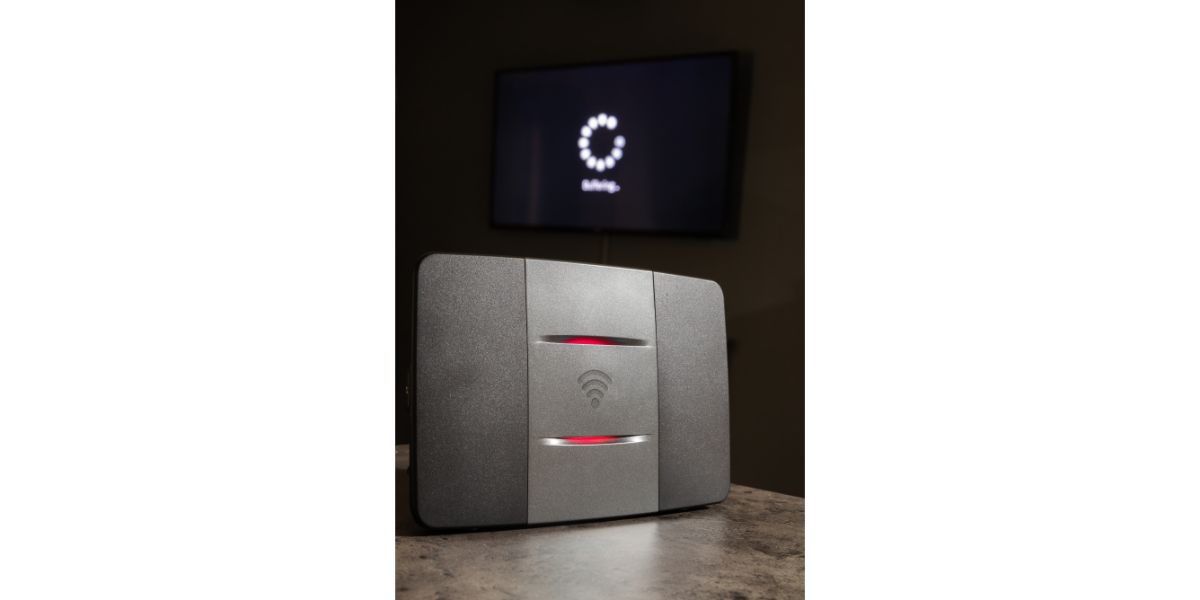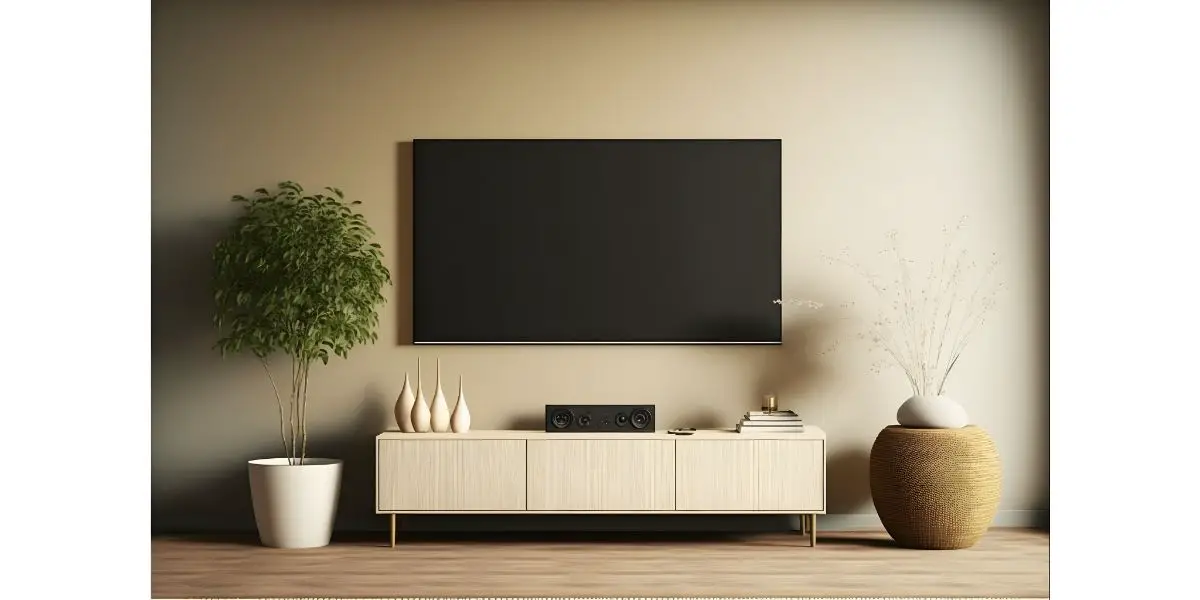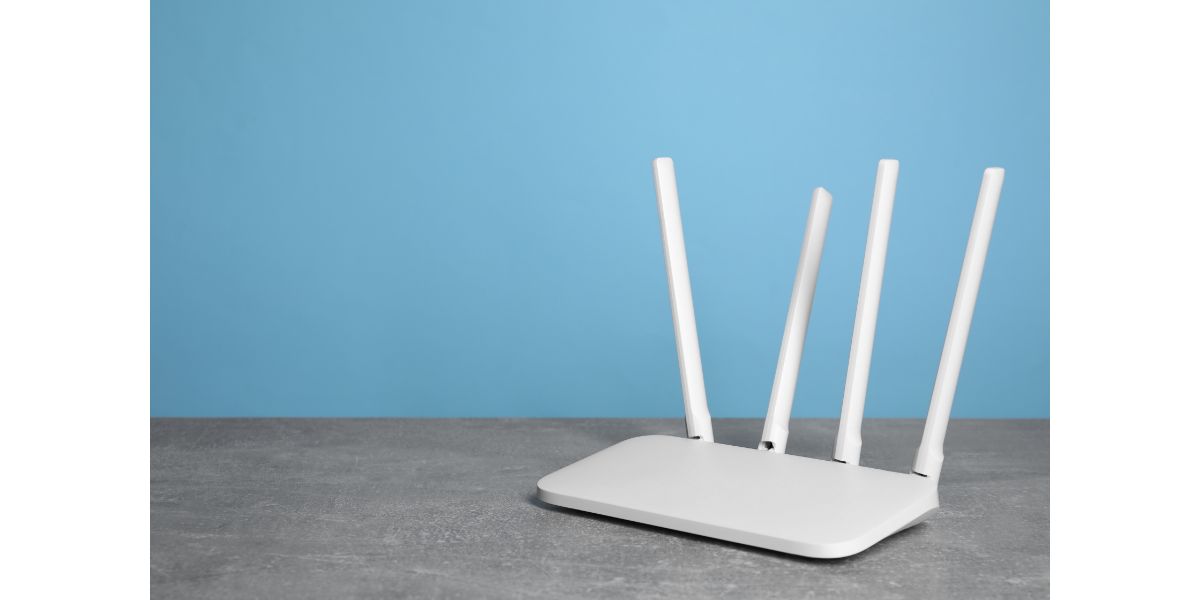Disclaimer: This post may contain affiliate links, meaning we get a small commission if you make a purchase through our links, at no cost to you. For more information, please visit our Disclaimer Page.
Buffering has long been one of the top streaming gripes. It’s particularly frustrating with smart TVs because you don’t always know what causes it or how long it will last.
Your smart TV keeps buffering due to its older WiFi components. It can also be due to its location, slow internet speeds, a crowded network, and unsupported definition.
In this article, we’ll explain what buffering is, what makes your smart TV buffer, and how you can address it.
Table of Contents
What Is Buffering?
To understand why your smart TV is buffering, we need to clear up what buffering is first.
When you stream content, your provider sends data to your router, which routes the data to your device. Depending on internet speed and router abilities, this can happen in the blink of an eye or for several minutes at least.
When streaming content buffers, the device uses a bit of memory to pause the stream in place while it receives and processes the rest of the data. Often, too much data is coming in at one time for the available speed to handle.
In other words, when you see a buffering image, data is still coming in at a speed the router can’t handle, so it can’t give you a full video.
Why Smart TVs Buffer (5 Causes)
1. Older WiFi Standards Used
Just like streaming boxes and computers, smart TVs have WiFi receivers that pick up the signal and convert it to what you see and hear. Those internal components aren’t future-proof, however.
WiFi technology has leaped forward since its inception, accommodating larger files at faster speeds through better equipment. Older (“legacy”) devices use older standards, which some modern WiFi routers don’t support.
If your smart TV uses an older WiFi standard, such as WiFi 4, it will struggle to process the data load. If the TV can’t catch up fast enough, it will buffer or drop the connection altogether.
2. Smart TV Location
Whenever you have a persistent WiFi reception issue, you should first check the distance between your device and your router.
For example, homeowners that have their internet modem and router installed in an office typically find their devices struggling on the opposite side of the house.
A router using the 2.4 GHz band that isn’t too far from the TV shouldn’t have an issue unless the network is bogged down, but when the distance includes multiple walls, the signal strength weakens.
The 5 GHz band is stronger but only at closer distances (meaning it can’t transmit very far), so smart TVs using that band struggle at a distance.
3. WiFi Interference
Wireless routers sending signals to wall-mounted smart TVs have the metal mounting bracket and the wall to contend with.
Walls with plumbing pipes inside present multiple obstacles in a condensed area. The water-lined pipes act as double-interference for WiFi waves.
Having more devices in your home that operate on the same kind of radio signals as your WiFi (2.4 GHz) can also interfere with the WiFi signal to your smart TV. For instance, wireless surround sound speakers must use these waves to stay synced.
4. Slow Internet Speeds
When a router with too few available bands (or overlapping bands) becomes crowded, internet speed suffers because too much data is trying to get through, which also means more requests to process.
You’ll also notice internet speed reductions if your router is outdated. Older routers and routers that aren’t designed to support greater bandwidth requirements cannot handle the amount of data in higher-definition audio and video.
Lastly, your internet service plan might not be able to keep up with your usage level. Even a better, closer router can’t raise your base internet speeds.
5. Definition Unsupported by Data Cap
If you’ve ever changed the resolution settings on YouTube to avoid buffering, you’re already familiar with this situation. High-resolution TVs display the data received from the WiFi, and all those pixels and colors require more data at higher speeds to satisfy the TV’s framerate requirements.
In this situation, the resolution is too high for the signal, so the router can’t transmit data fast enough for the TV to maintain a steady picture. So there’s no picture ready to display, and the TV has to wait for the rest of the data to come through.
This is why weak signals often translate to pixelated video images with multi-colored groups of squares breaking up an otherwise intact image, like water spraying from a partially constricted hose mouth.
This is similar to the slow internet problem. In this case, your ISP and router speed may not be the problem.
A low data cap (or one you’ve simply maxed out) that worked well for a while may struggle to meet higher-resolution demands from newer devices.
How To Fix Smart TV Buffering
Below are several proven solutions you can implement to correct buffering and connection issues. Many of them essentially involve improving your data transmission rates.
However, if you don’t have success on the internet end, we’ve written an article on playing movies from a hard drive plugged into your smart TV to avoid having to use the internet.
Restart Your Devices
Sometimes, the solution is as simple as turning your device off and back on again. Since the device is doing all the real work, it’s easy to complicate simple issues by assuming there must be more to it.
When devices run for long periods without restarting, they’re accumulating leftover bits of data from running programs and surfing the web. That buildup can cause the system to clog and run slowly.
Restarting devices allows them to clean up files and re-tidy their environments to accommodate new commands and data.
First, restart your internet by resetting your WiFi router and/or modem. Then, restart your smart TV by navigating to the settings menu and selecting the restart option.
You have to take these two steps because only turning the TV off won’t solve the issue. Smart TVs keep a continuous WiFi connection and can download new data and run processes even with the screen/monitor off.
Free Up Bandwidth
Freeing up bandwidth gives your router some breathing room to deliver a steady signal to your smart TV rather than being restricted by the simultaneous demands of other network devices.
Disconnect or power off other devices you suspect of hogging data to create more usable space for priority data to get through.
Check around for obvious devices connected to WiFi, such as:
- Smartphones
- Tablets
- Computers
To clear as much space as possible, consider less-obvious sources like:
- Appliances
- Video game consoles
- Smartwatches
- Smart speakers
Sometimes, a user on your network may not be using their device directly, but the device may be downloading a large update or content file, taking up considerable data for long periods.
If you still have this issue after taking the previous steps, take the time to run a diagnostic test on your network to find devices you may have missed.
Check for Updates
Smart TVs require periodic firmware updates that enhance how it works and software updates for the installed applications. (Read about the difference between software and firmware here.)
Open your smart TV settings, and navigate to the update section. (You must consult your TV maker’s instruction manual for specifics.) If there’s a button to force-check for updates, click it and update if one is available.
While you’re there, check for an option to automatically install updates as they launch. This will keep you from having to check in the future.
Run a WiFi Diagnostic Test
Running a diagnostic test shows you how many devices are on your network and how much data is being used.
This test will tell you how your network is doing overall, indicating the speeds your configuration achieves in reality as opposed to your service provider’s quoted speed.
Ideally, these two should match, though you’ll find that’s not what often happens.
On Windows, right-click on the WiFi icon in your lower menu bar.
For Mac, hold down the Option (⌥) key and click the WiFi icon in your upper menu bar.
This action pulls up a menu of various network preferences and options. Select the option for wireless diagnostics and run a test.
To check the WiFi status where your smart TV is, open its settings menu and navigate to network options. From here, you should see the option to check your TV’s signal reception strength.
Switch to the 5 GHz Band
Most devices around your home use the 2.4 GHz band. Move your TV to the 5 GHz band and make sure it’s in close range. The greater bandwidth will handle high-definition stream data demands much better.
If you don’t have that option, you need to upgrade your router to a dual- or tri-band version to broadcast both signals simultaneously. If you don’t plan to upgrade to a mesh system, you’ll need a new router to transmit two or three bands.
The TP-Link AX3000 smart WiFi router (available on Amazon) transmits three bands for maximum customization of devices on your network. It’s backward compatible with older WiFi standards and promises a “buffer-free” experience.
To move to the 5 GHz band, simply open your smart TV settings and connect it to the 5 GHz version of your network.
Use Another Channel
5 GHz bands have more and wider channels on them than 2.4 does. It also lacks overlapping channels that can interfere with each other. Switching to the 5 GHz generally will improve your speeds, but you also have the option of using different channels within the 5 GHz bandwidth.
Moving to a wider channel with zero competition from other devices effectively designates a chunk of WiFi for your smart TV. Just as moving to the 5 GHz band specifies which network your TV can use, changing the network channel selects the optimal channel for that data to ride.
Connect via Ethernet
If WiFi troubleshooting doesn’t get you to a buffer-free experience, consider using a hardwired connection for heavier streaming purposes.
Connecting your smart TV directly to the internet with an ethernet cable takes care of most streaming issues because the distance doesn’t matter nearly as much, and interference becomes a non-issue.
The only roadblock you might run into is that not all smart TVs have an ethernet port due to the advances in WiFi technology.
Thankfully, adapter technology has also caught up. You can use the super-convenient Hiearcool 8-in-1 multiport adapter (available on Amazon) to turn your TV’s HDMI or USB port into an ethernet port.
You’ll love the ability to use multiple ports at once and take full advantage of its pass-through power for streaming, gaming, and more.
Connecting via ethernet works but is limited by the speed your plan allows and the amount of traffic on your network.
Upgrade WiFi To Mesh
Many viewing setups disallow moving routers and TVs around to close the distance. Usually, there’s a single installation point for the modem and router. They aren’t made to be portable, and flat, wall-mounted TVs don’t transfer rooms easily.
Furthermore, not everyone wants to buy another adapter to keep up with to create an ethernet connection. Plus, running a 40′ (12.2m) ethernet cord through the house presents an unsightly wall decoration/trip hazard — not to mention a permanent line in the attic and through the wall.
Upgrading your WiFi to a mesh network improves connection reliability and strength by spreading it over your entire house. The separate WiFi nodes (satellite routers/repeaters coded to use a separate wave to sync with each other) broadcast the signal from their location.
The Amazon eero mesh WiFi system (available on Amazon) covers a stout 1500 sq. ft. (139.4 sq m) with just one node. Size up to the 3-pack for larger homes in the 4500 sq. ft. (418.1 sq m) range.
With reliable coverage and consistent connections, Amazon’s eero mesh eliminates distance and signal strength-related issues, including buffering.
Besides, it can transmit 2.4 GHz and 5 GHz bands simultaneously to accommodate a greater variety of devices.
Final Thoughts
While several smaller issues may be present, smart TVs buffer mainly because the data cannot get to your TV fast enough to give you audio and video. You may need to consider hardware or internet plan upgrades to get your stream’s best speeds and data rates.



